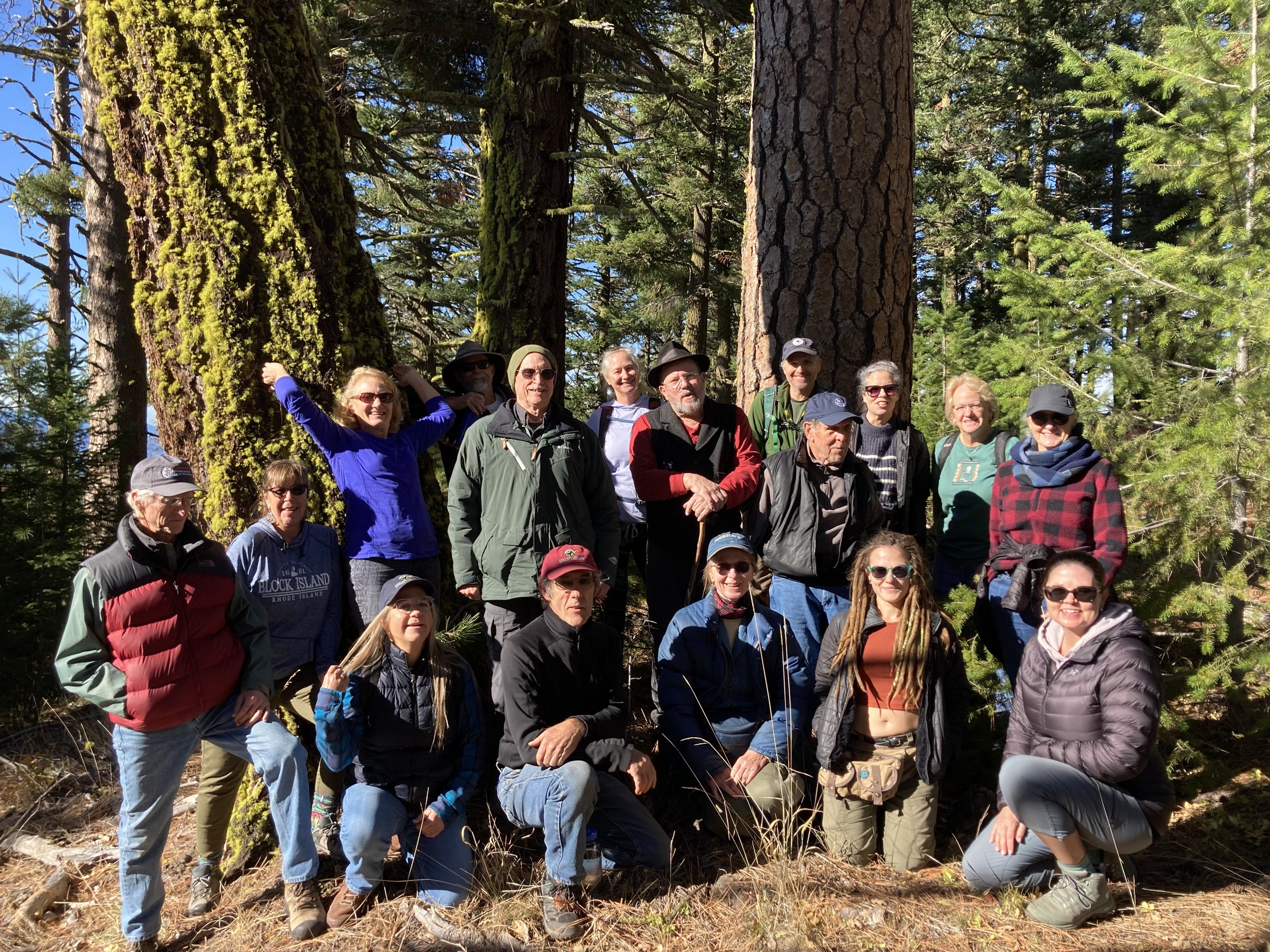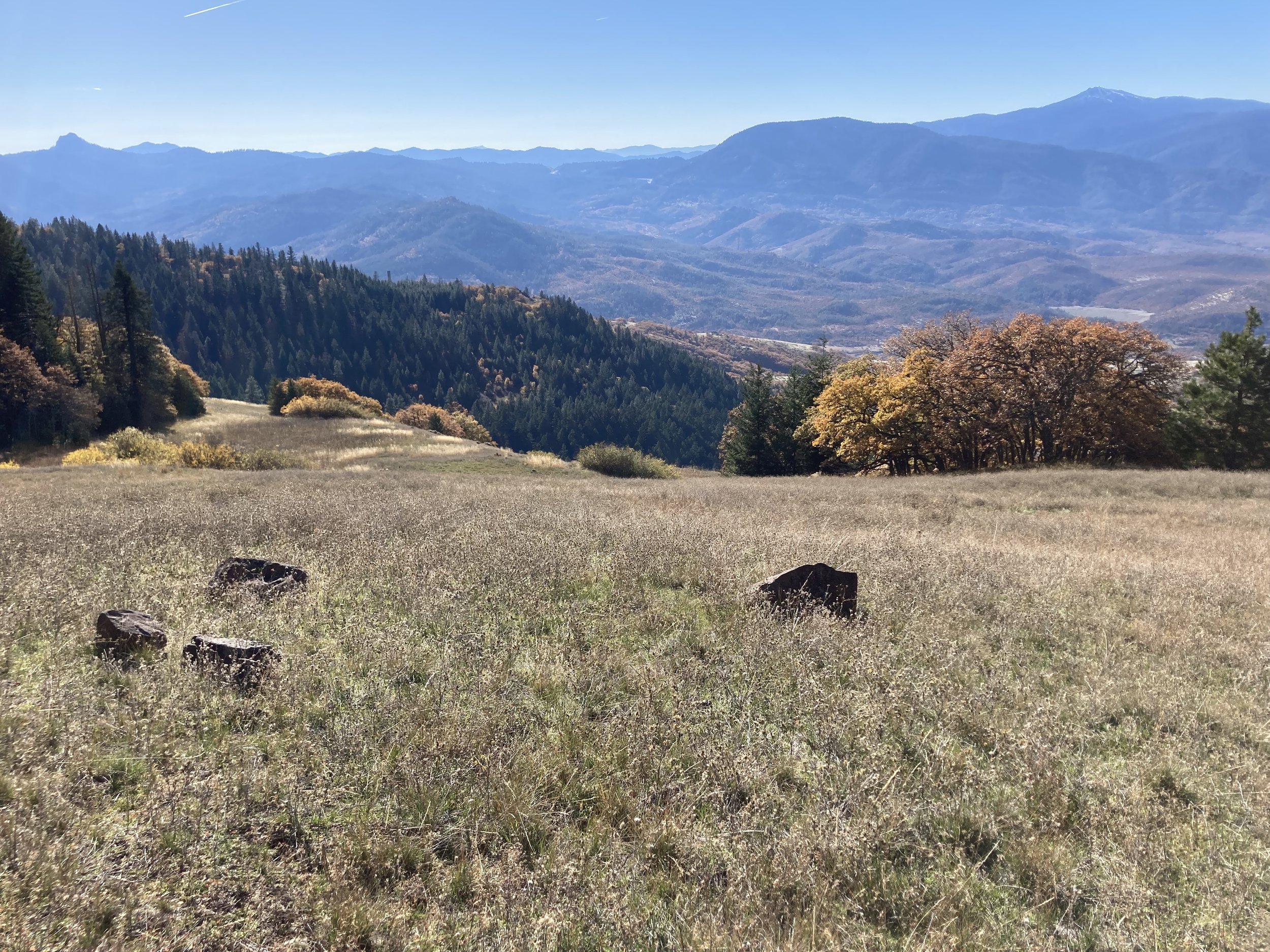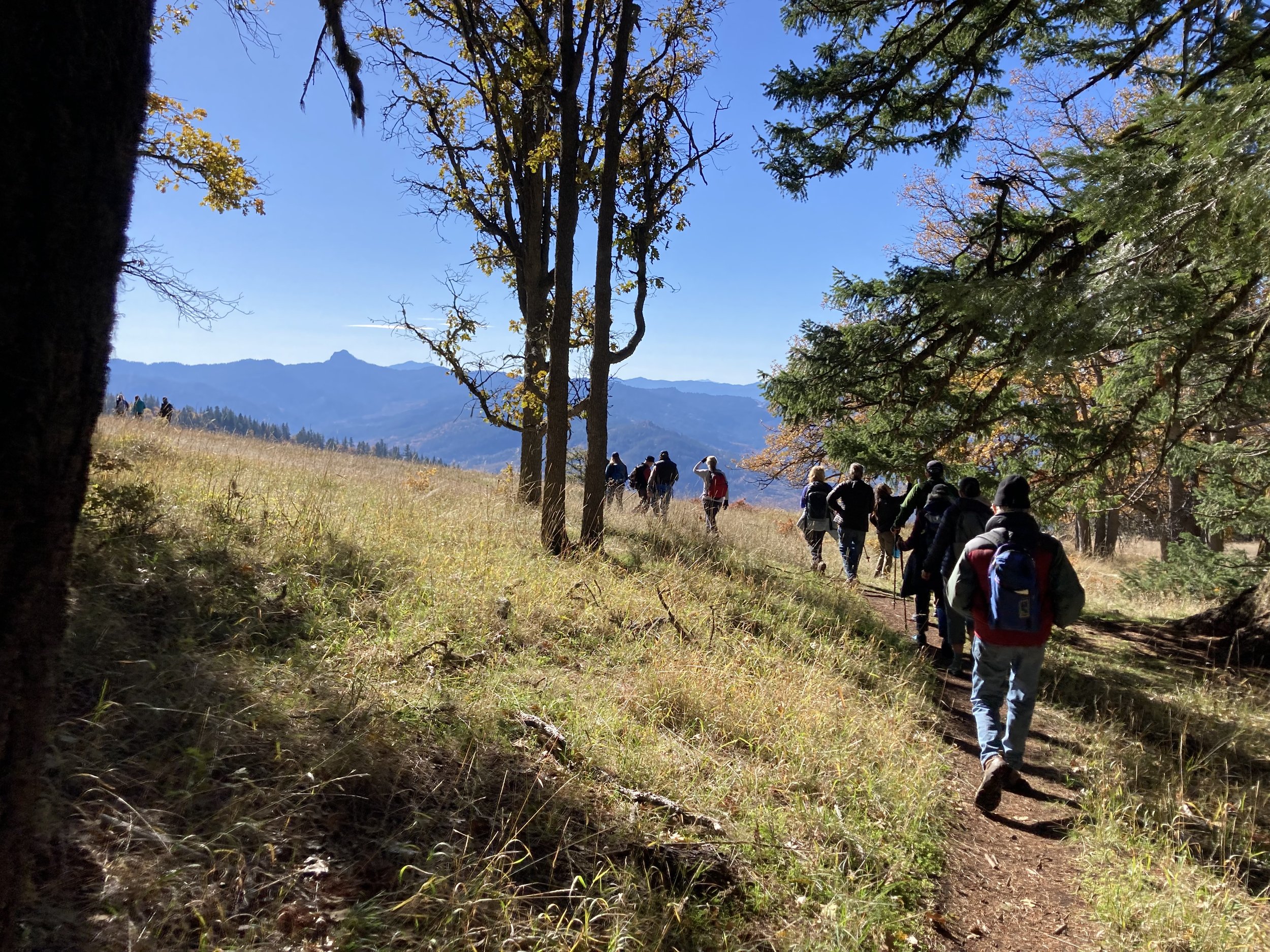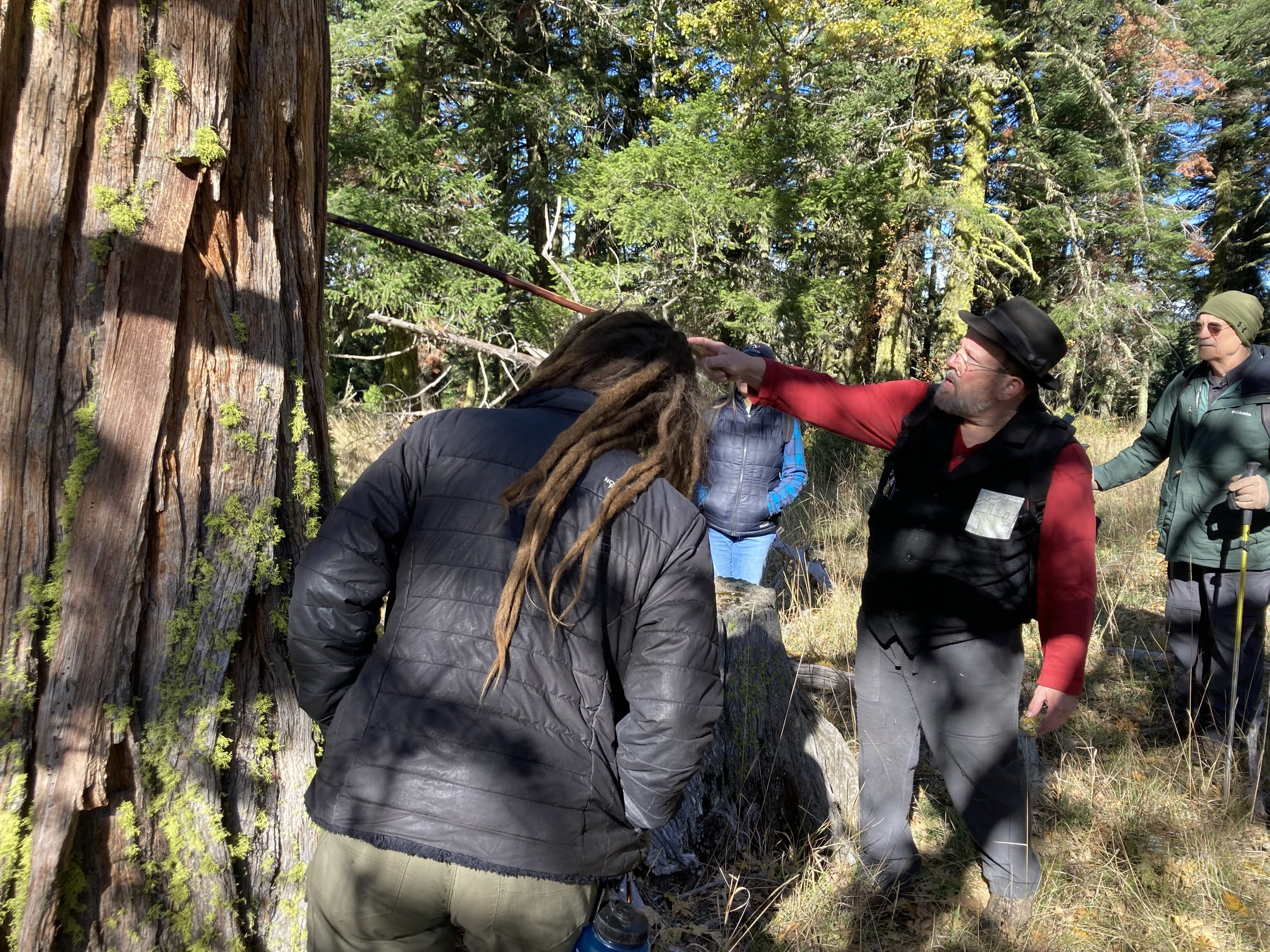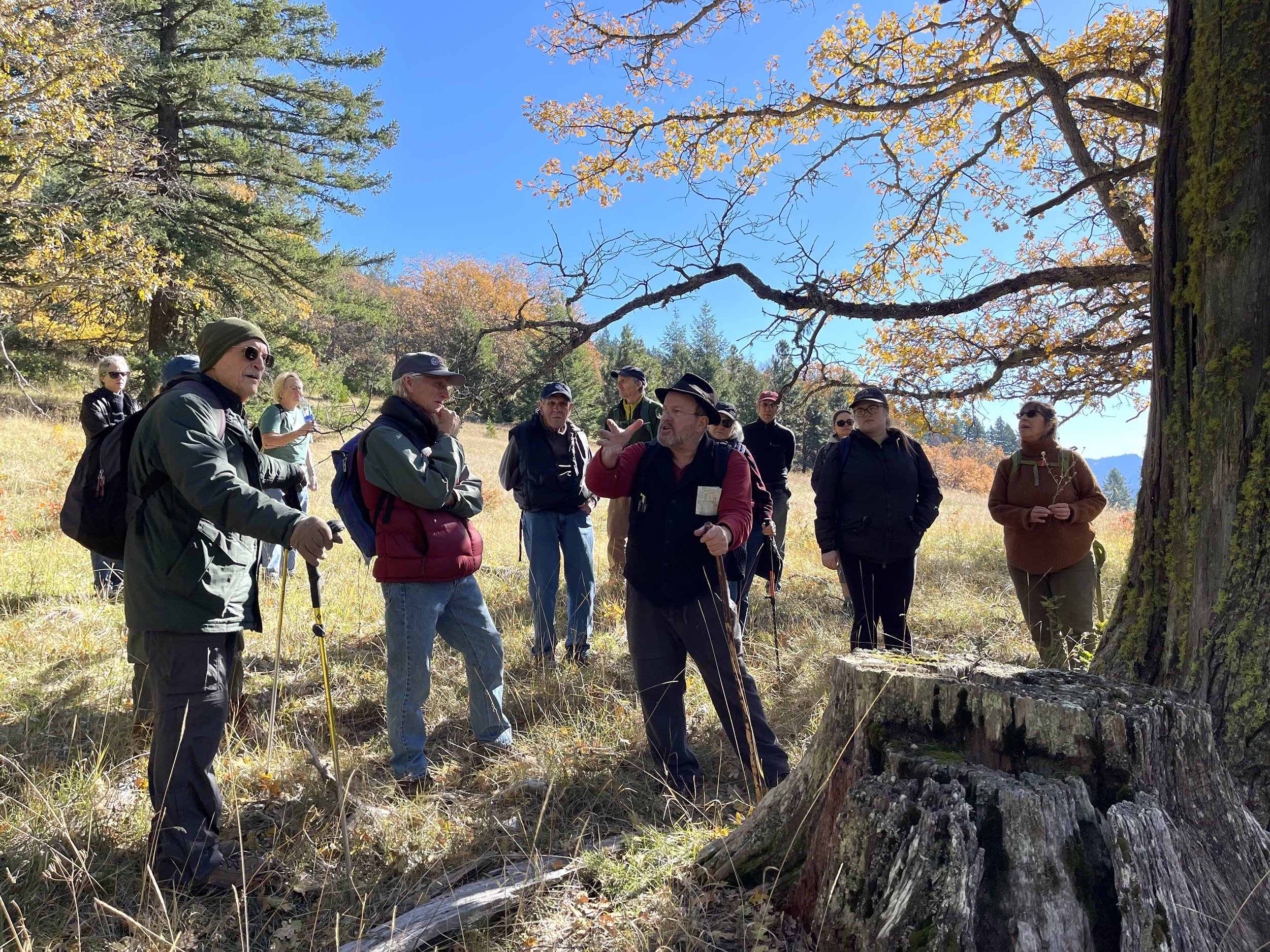By: Zaynab Brown
To watch a recording of Rich’s lecture click HERE
Living in Southern Oregon or Northern California, it is impossible to ignore the reality of fire. In particular, the raging forest fires that blanket the valley floor in a thick, acrid layer of smoke that obscures the mountains and turns the sun red. Each year when the moisture of springs starts to give way to crisp undergrowth and fire season begins, a sense of anxiety informs almost every day; what is going to burn next? It is true that our local ecosystems rely on fire for health and productivity, a fact that the indigenous people have known and used to their advantage for countless generations, yet are these huge, destructive fires the norm? If not, how can we change our approach to fire to work with nature instead of against it? These and other questions are what Rick Fairbanks set out to address in our Fire History and Ecology Hike and Learn.
Rich Fairbanks has accumulated a wealth of knowledge and interesting stories through his career with the U.S. Forest Service for 32 years in fire management, planning, and silviculture. He is informed by his degree in forestry, his work on the Biscuit Fire Recovery Project, and his experience at his own property where he does a considerable amount of underburning in the mixed conifer forest. It was with his classic dynamism and humor that Rich began to take us through the multi-dimensional picture of fire in the Cascade-Siskiyou National Monument.
It isn’t possible to discuss the ecology of something without considering the plants. When it comes to fire ecology in particular, it is truly the plants that tell the story of an ecosystem that coevolved alongside this force of nature and has the adaptations to prove it. While there are many herbaceous species that also benefit from being burned, we primarily focused our attention on trees. We appreciated the robust fire resistance of the ubiquitous ponderosa pine with its thick bark, self pruning habit, and robust wound response. Other conifers such as the douglas fir, sugar pine, and incense cedar, while not quite as impressive as the ponderosa, still sported fire resistant bark and the ability to easily withstand a low-severity fire. However, fire resistance is not confined just to conifers. Oak trees also wield adaptations to fire in the thick bark of older trees, the ability to resprout from stumps, and how acorns stored in the duff are stimulated to sprout and grow. If you are interested in learning more about the Monument’s oaks, please visit our previous blog post: Oak Trees in the Monument
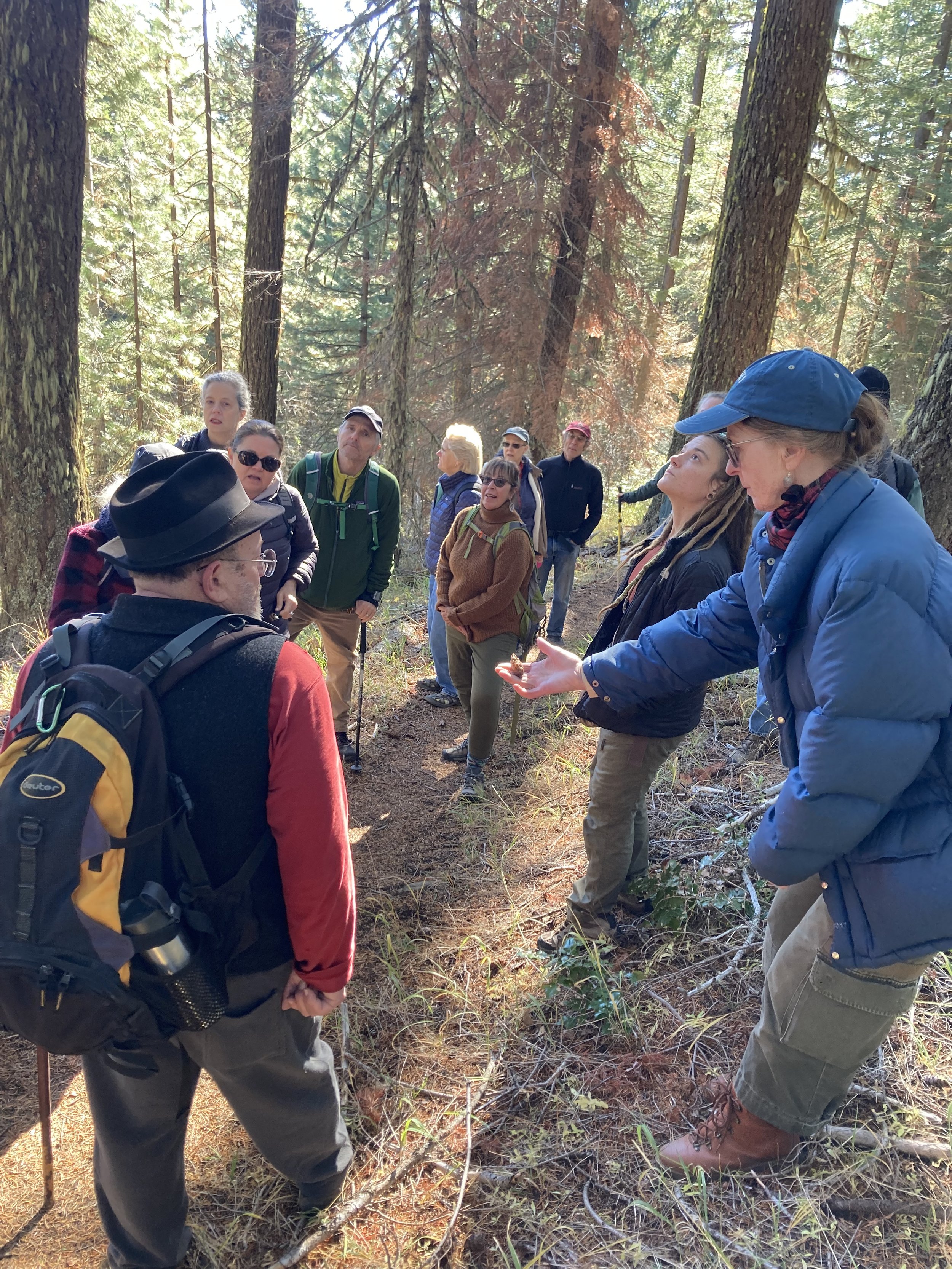
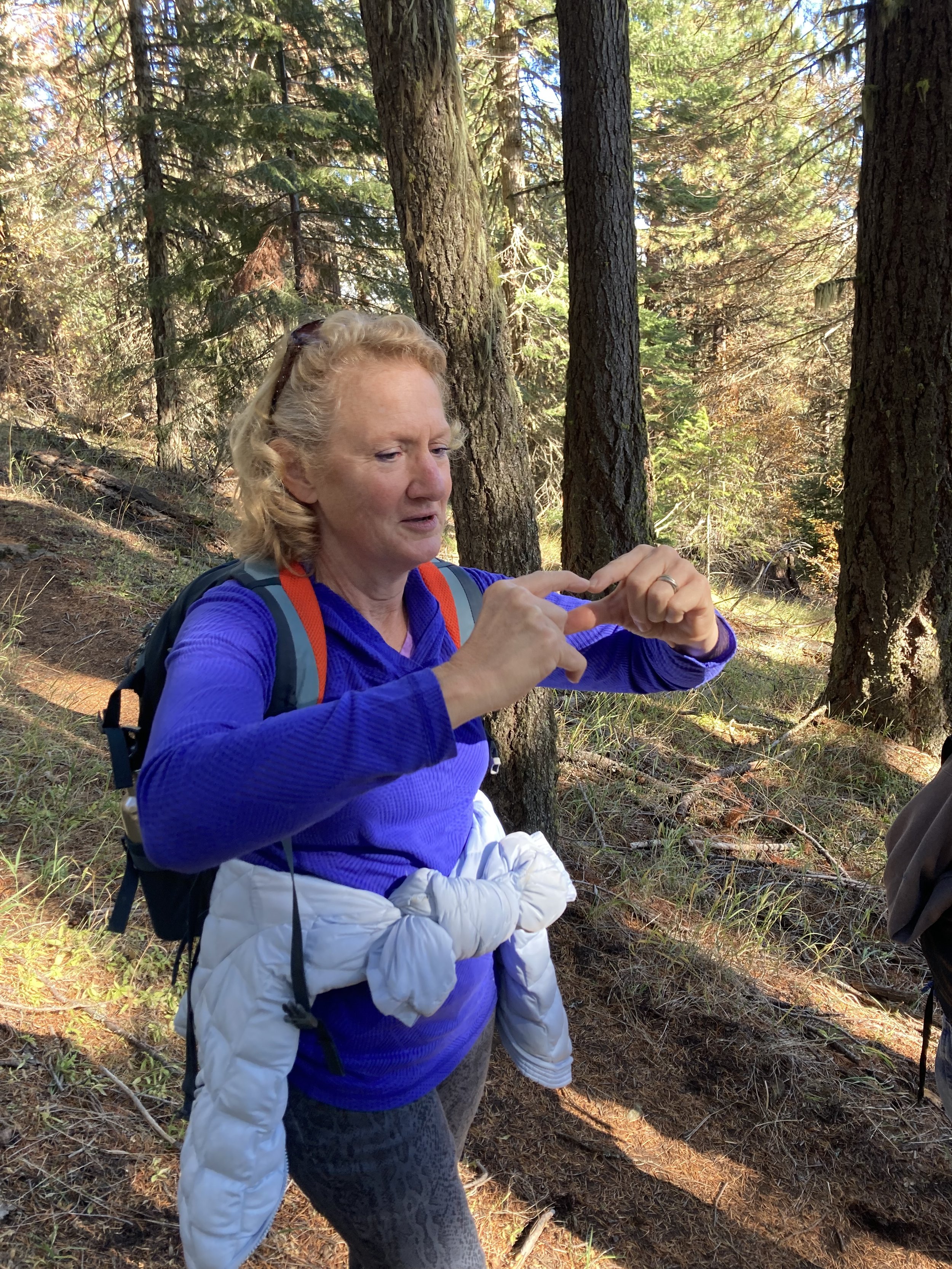
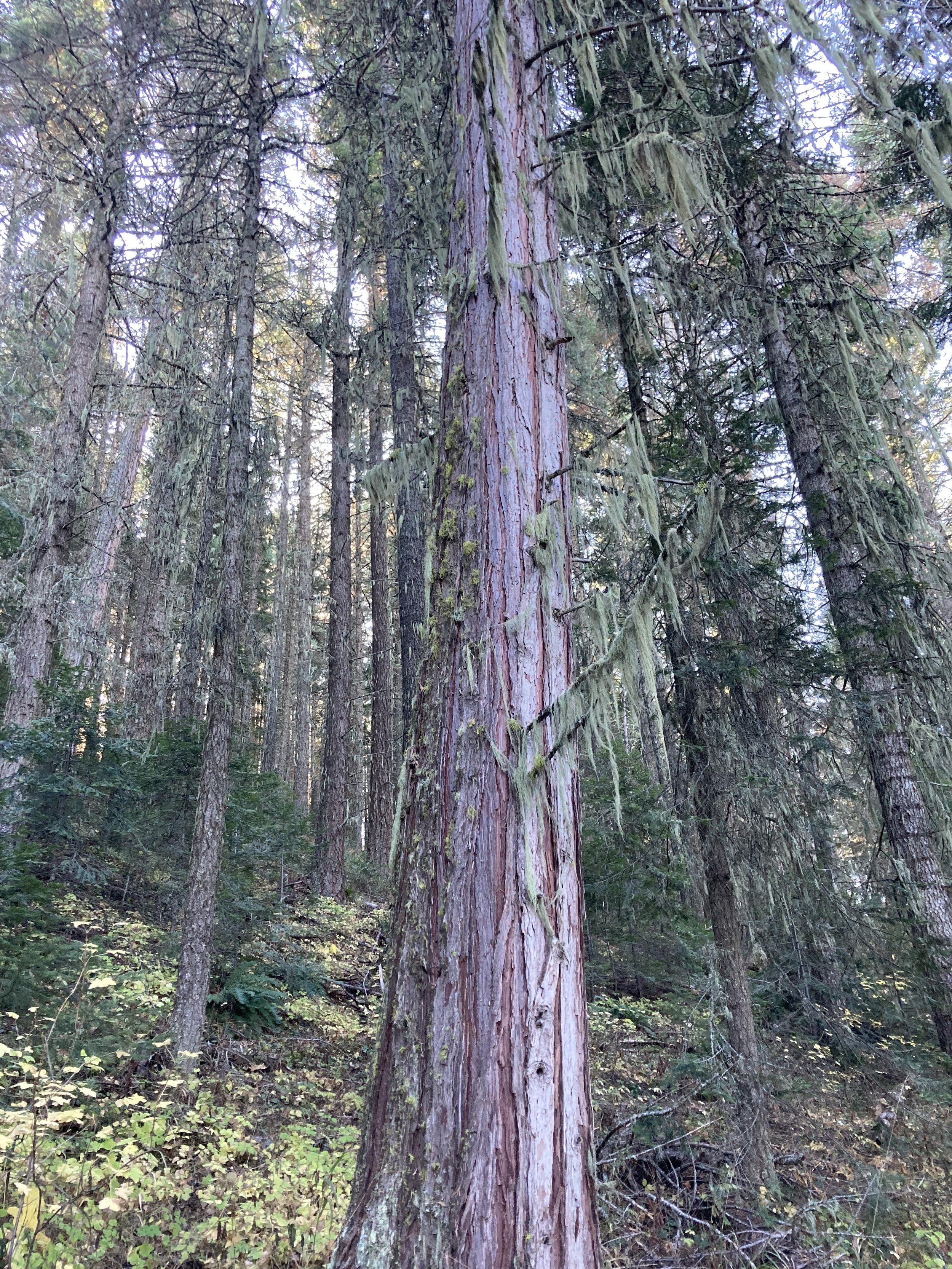

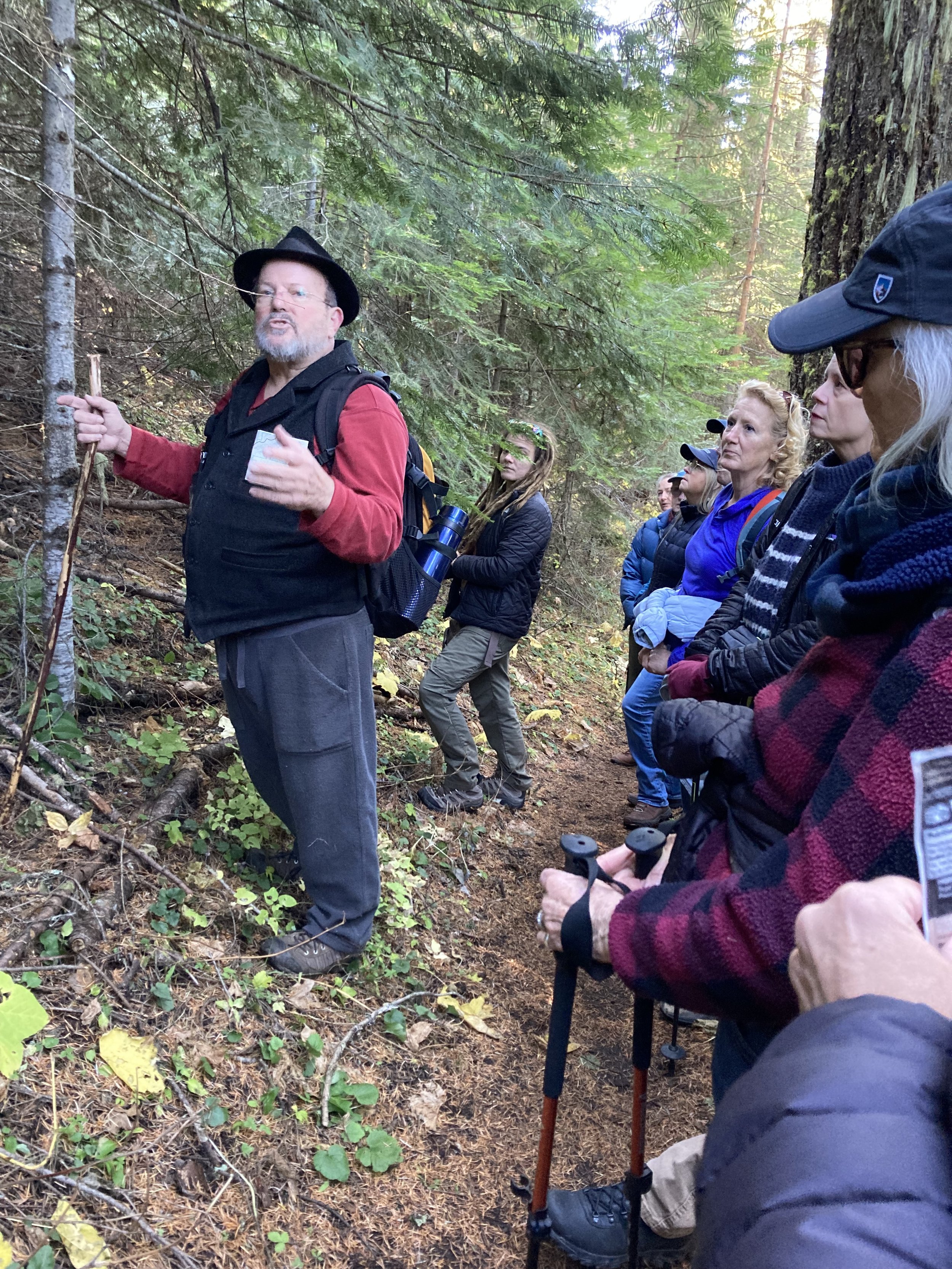
When the indigenous people first arrived in the region of the present-day Monument, they were faced with an environment that already had intense fire activity. That left them with a choice: React to fires started by lightning or work with this natural phenomenon and pick up the torch. They chose to make friends with fire and learned how to predict and wield it to manage the landscape. When European colonists arrived in the area, they did not recognize the important role and invaluable knowledge of the indigenous people in the management of the landscapes that they took for granted. This led to a period of fire suppression that we still experience today where smaller, low severity fires are not allowed to burn and huge, high severity fires are now ripping through the dense vegetation spurred on by hotter and drier summers.
Rich took us on a tour of the science behind wildfires and what causes their behavior including fuels, weather, and topography. Ultimately, the only factor that humans can influence is fuels. It was from there that we learned about fuel categories and how the surface area to volume ratio affects how materials burn. Finally, Rich discussed what he hopes will be the future of fire in the Monument. In his opinion, this future includes a lot more planned fire, mechanical fuel treatment when appropriate, the effective management of noxious weeds, more fire research, and greater support for Minimum Impact Suppression Techniques (MIST).
We were fortunate to have many attendees in the audience who brought their own experience with fire and botany to the table. Questions ranged from adaptive phenotypes of local douglas fir to the importance and power of community engagement in how fire is managed in our public lands. In particular, we discussed the importance of MIST in preserving the character and value of wild places that would otherwise be damaged due to heavy-handed suppression techniques.
It was with enthusiasm that we all gathered at the trailhead to the Green Springs Mountain Loop trail in the Monument the next day. Despite the discussion of the possibility of snow, the weather could not have been more beautiful. Warm sun shone down and made us a little too warm for our winter jackets and the shade had just enough chill to keep us on our toes. With an impressive group of 17 people, we began to snake our way down the trail. Rich, who helmed our educational adventure, stopped us along the way to quiz us on conifer identification and to admire old-growth Douglas firs casting cool shadows from above.
As we walked along the relatively popular trail, we were stopped just as frequently by participants who had insightful questions or spotted plants that they wanted to share with the group. It made for slow going, but often the best hikes are the ones that meander and pause frequently to notice the little things.
We emerged from the trees and found ourselves gazing out at an incredible vista looking down into a valley. The golden meadow stretched into the horizon before giving way to mighty blue mountains. It is here that we turned right and crossed through a grove of oak trees, arranged in a “fairy ring.” Rich stopped to tell us that this was a tell-tale sign of fire where an oak had been burned and then resprouted around the trunk. Most likely, if you were to look carefully, you could find charred bits of oak in the center. But this was not our final destination. Soon, we found the real goal of our detour: A fire refugia.
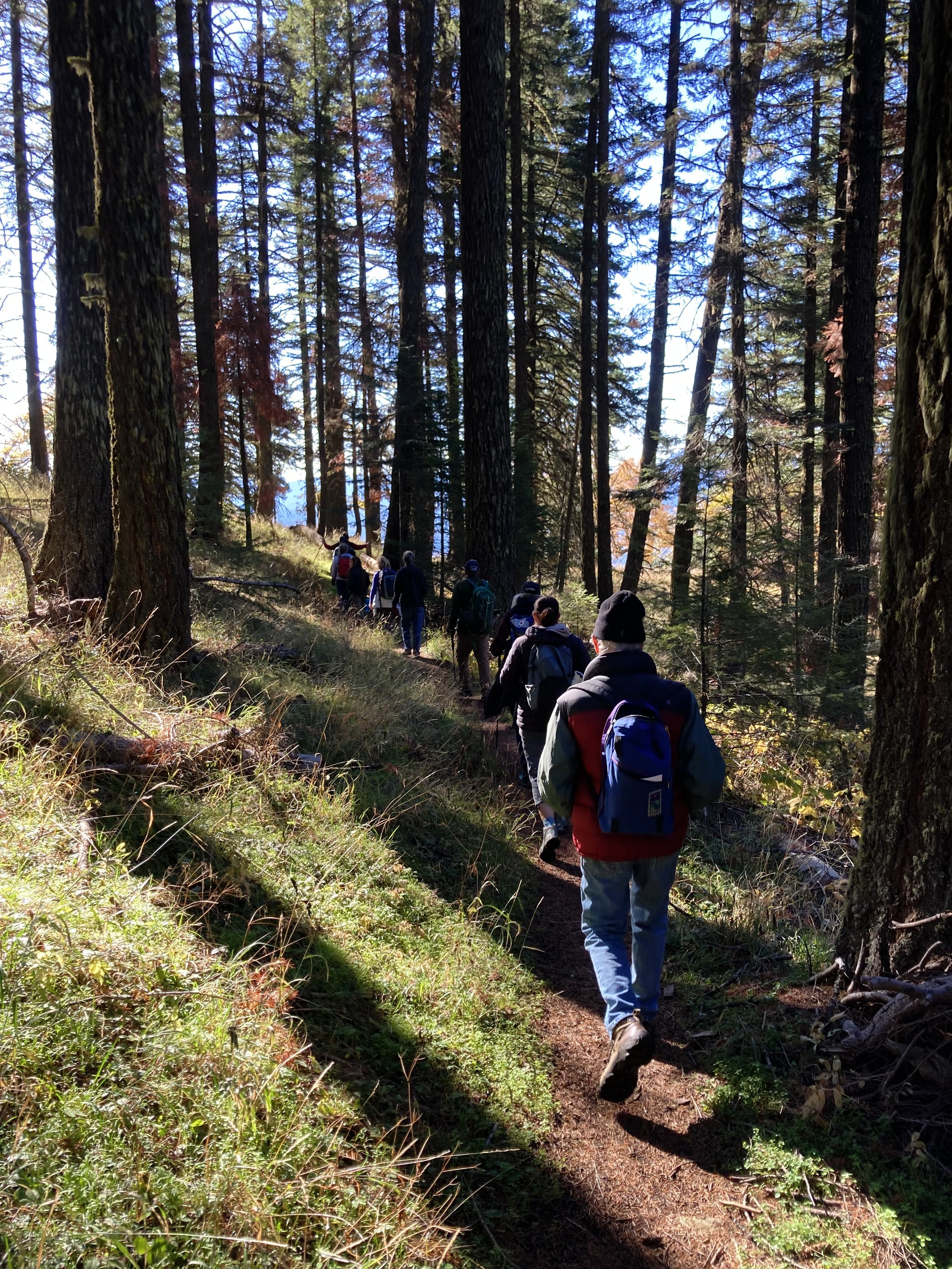
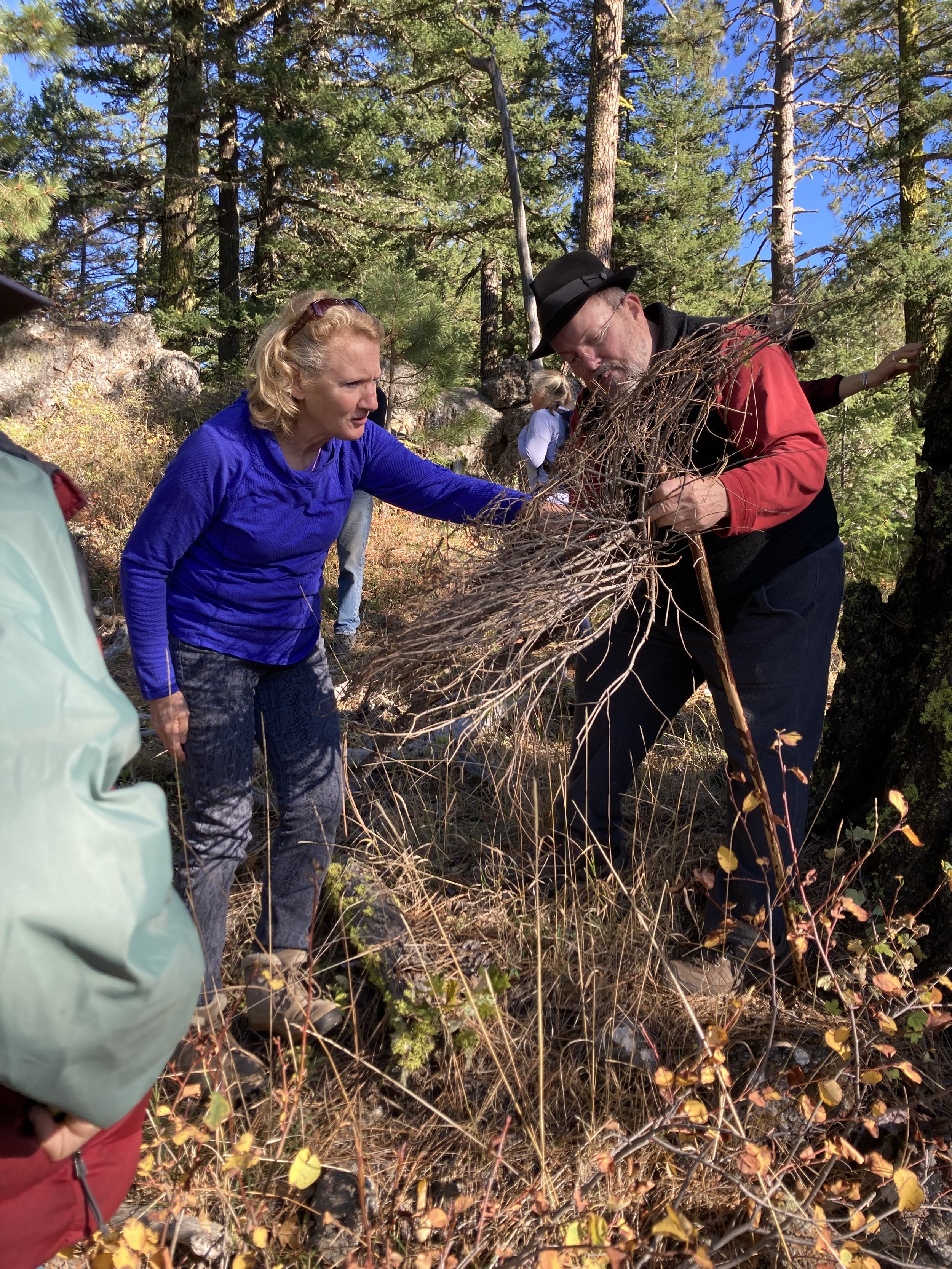
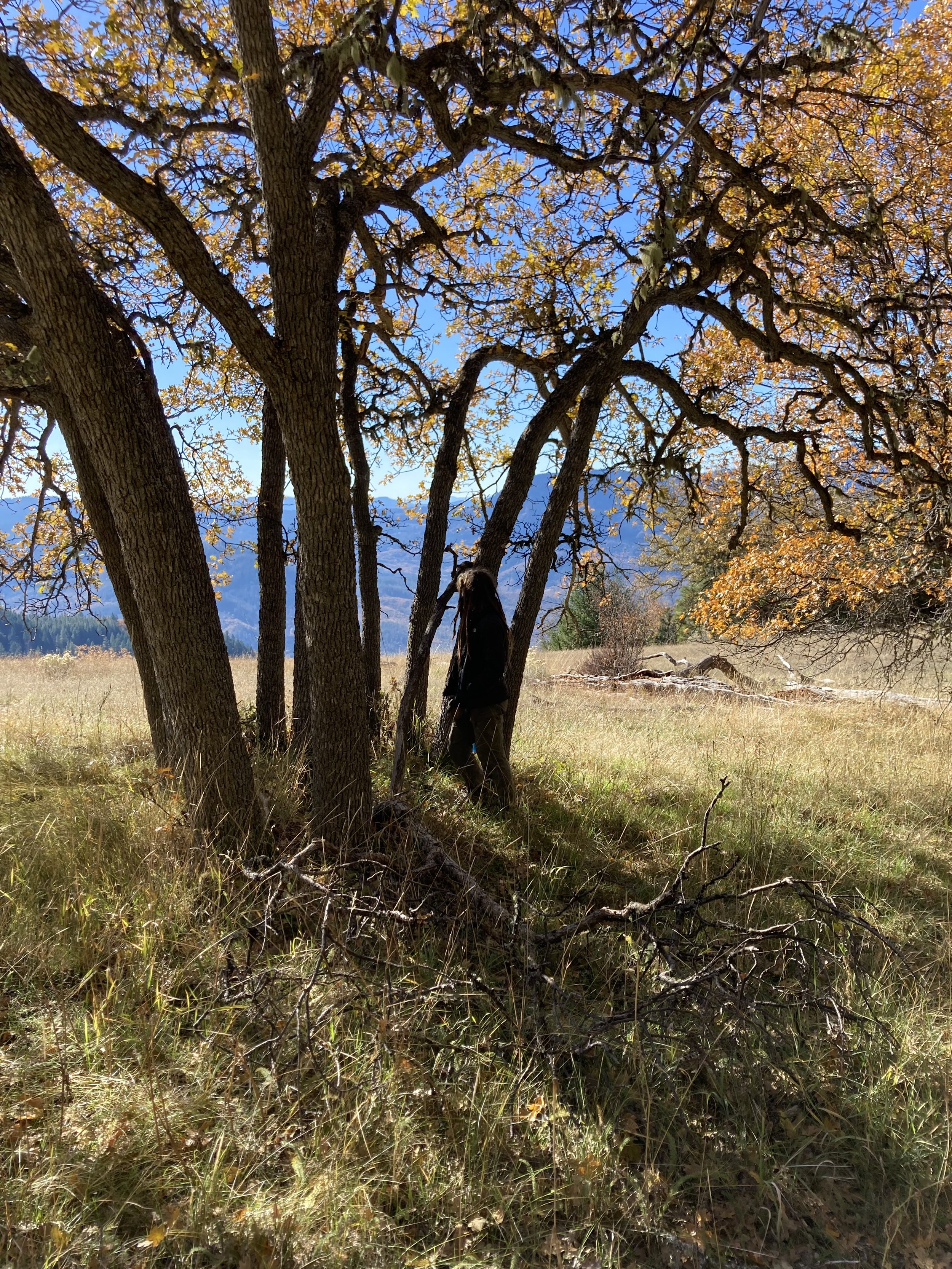
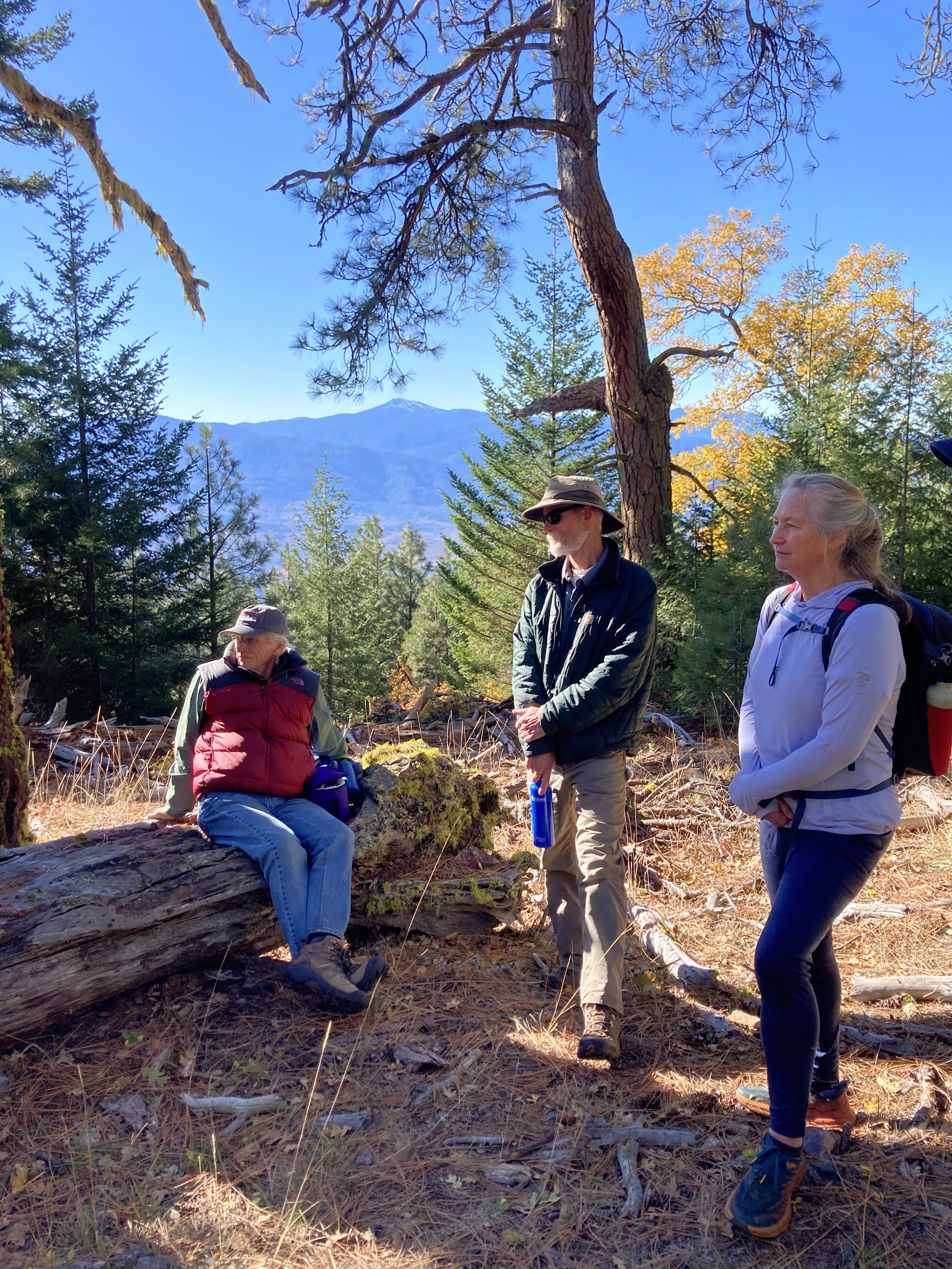

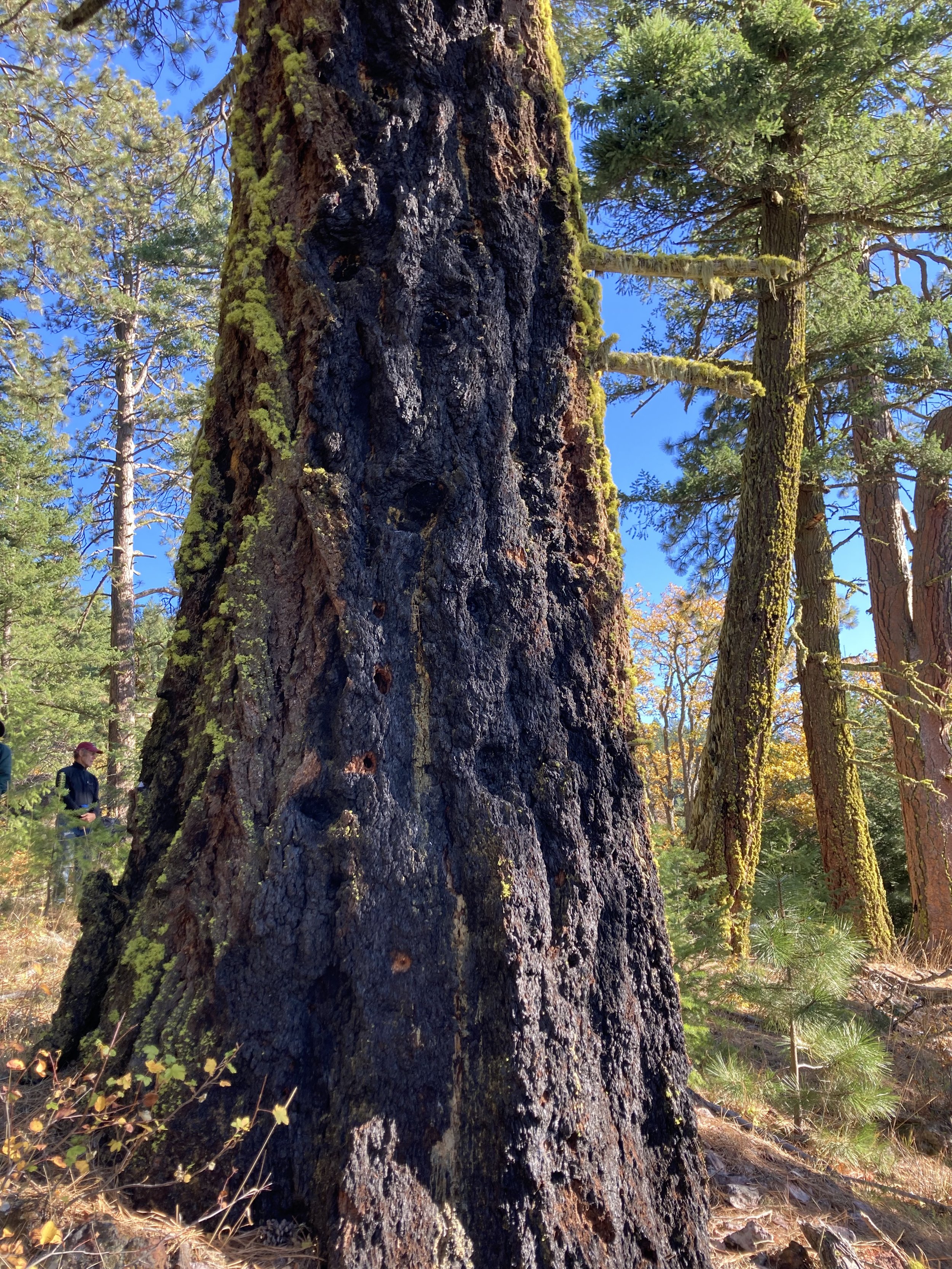
Fire refugia are unique places that are protected from high severity fire by topography, microclimate or fuel conditions and allow individual trees to reach a very old age. The centerpiece of this particular refugia were towering ponderosa pines and douglas firs. As we approached, their true age and size were humbling. People often make pilgrimages to the redwoods to witness trees that evoke a sense of wonder, but we had our very own in the Monument. Neon green lichen clung to their trunks and their thick and gnarled bark told a story of past fires that charred but did not kill. Blackened fire scars crawled up their sides.
We had the honor of eating our lunch below the soaring trees as their branches cast shade like they had for hundreds of years. Due to a random quirk in the landscape, we were able to experience a miniscule slice of what the Cascade-Siskiyou National Monument may have looked like hundreds of years ago when people and fire were able to work together.
